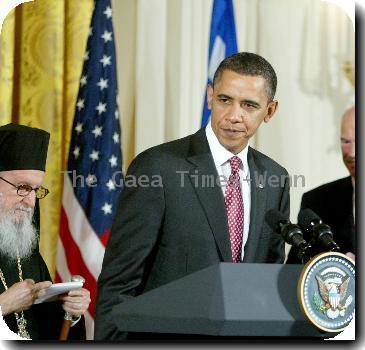Sensors deployed to better track spilling oil as pressure mounts on BP to set up claim funds
By Ray Henry, APSunday, June 13, 2010
Sensors deployed to better track oil spill in Gulf
SCHRIEVER, La. — Undersea sensors were deployed to a ruptured well in the Gulf of Mexico on Sunday in an effort to better track the amount of oil gushing into the sea as pressure mounted on BP to create special accounts that would set aside billions of dollars to pay for spill-related claims.
New estimates say the blown-out well could have been spewing as much as 2 million gallons of crude a day before a cut-and-cap maneuver earlier this month started capturing some of the flow. That means more than 100 million gallons may have leaked into the Gulf since the start of the disaster in April.
BP has struggled with several efforts to contain the oil. The federal government has given the energy giant until the end of Sunday to respond to a demand that the oil giant find ways to better contain the oil spilling into the Gulf.
Scientists also haven’t been able to pin down just how much oil is spilling into the Gulf, and the government has stressed that the larger estimates were still preliminary and considered a worse-case scenario. The Obama administration’s point man on the oil spill, Adm. Thad Allen, on Sunday said government officials think the best figures are from a middle-of-the-road estimate, which would put the spill at around 66 million gallons of oil.
Allen said the sensors were to be deployed Sunday and will start taking pressure readings to validate the estimates. BP spokesman Jon Pack said undersea robots were attempting to install the sensors within the containment cap that sits over the well.
“I’ve told everybody from the start these are only estimates. We will only know what is flowing out of that well when we have it completely capped, control the flow, can actually measure,” Allen told CBS’ “Face the Nation” on Sunday.
It’s not known just how much oil started to leak after the riser pipe was cut on June 3, a step that BP and government officials said could increase the flow by 20 percent. The pipe cut was necessary to install a cap over the well; the cap has captured an estimated 5 million gallons so far.
Meanwhile, the White House and at least two Gulf states demanded that BP create special accounts that would set aside money to pay for the mounting claims related to the spill.
President Barack Obama wants an independent, third party to administer the escrow account and compensate those with “legitimate” claims for damages, Obama’s top political adviser said Sunday. The amount of money set aside will be discussed during talks this week between the White House and BP, but Axelrod said it should be “substantial.”
“We are aware of the request,” said BP spokeswoman Sheila Williams in London. She declined to comment further.
Gulf states also were putting the squeeze on BP. The attorney general in Florida and the state treasurer in Louisiana want BP to put a total of $7.5 billion in escrow accounts to compensate the states and their residents for damages now and in the future amid talk of the possibility that BP may eventually file for bankruptcy.
“At the end of the day, my concern is Louisiana,” state treasurer, John Kennedy, told The Associated Press on Saturday. “BP ultimately will do what BP thinks is best for BP.”
Alabama doesn’t plan to take such action, and Mississippi and Texas haven’t said what they will do.
But even with Florida and Louisiana, BP might have a hard time complying, and if it did, it could hasten the company’s spiral downward. That’s because as of March 31, BP had $6.8 billion in cash and cash equivalents available.
The company said in a statement to the AP that it’s considering the Florida request. It didn’t address the comments by Kennedy.
On Saturday, the Coast Guard made public a testy letter sent to BP demanding the energy giant pick up its pace and present a better plan to contain the spill by the time Obama arrives at the beleaguered coast for a two-day visit on Monday. BP’s chief operating officer, Doug Suttles, said the company would respond to the letter by Sunday night.
Tensions between BP and the federal government have ramped up as the public outrage over the spill has grown. Obama has come under increasing criticism for his response to the disaster, with even some of his strongest admirers feeling his response at times has been aloof.
The president will meet BP executives, including the company’s chairman, on Wednesday, a day after he returns from the Gulf. The president also plans an Oval Office address to the American public on Tuesday night.
Along the Gulf Coast, beaches in Orange Beach, Ala., where large amounts of crude and tar balls washed ashore a day earlier, were mostly clean on Sunday after crews worked through the night and in the early morning clearing the oil.
Clear plastic bags sat in piles, full of sand and tar balls, and some empty stretches of beach were still littered with grapefruit sized tar patties.
“This is the saddest thing I’ve ever seen,” said Margaret Hartig, of Chicago, while walking on the beach.
BP said Sunday that a containment cap sitting atop a leaking pipe in the Gulf of Mexico captured about 631,680 gallons of oil Saturday, preventing that discharge from flowing into the ocean. To boost its capacity, BP also plans to trap oil using lines that will suck oil and gas from the well to a drilling rig where it will be burned. This system could be working by early next week, BP said.
____
Weber reported from Houston. Associated Press writers Jay Reeves and Brian Skoloff in Orange Beach, Ala., contributed to this report.
Tags: Accidents, Alabama, Barack Obama, Coastlines And Beaches, Environmental Concerns, Florida, Louisiana, North America, Pensacola, Schriever, United States

